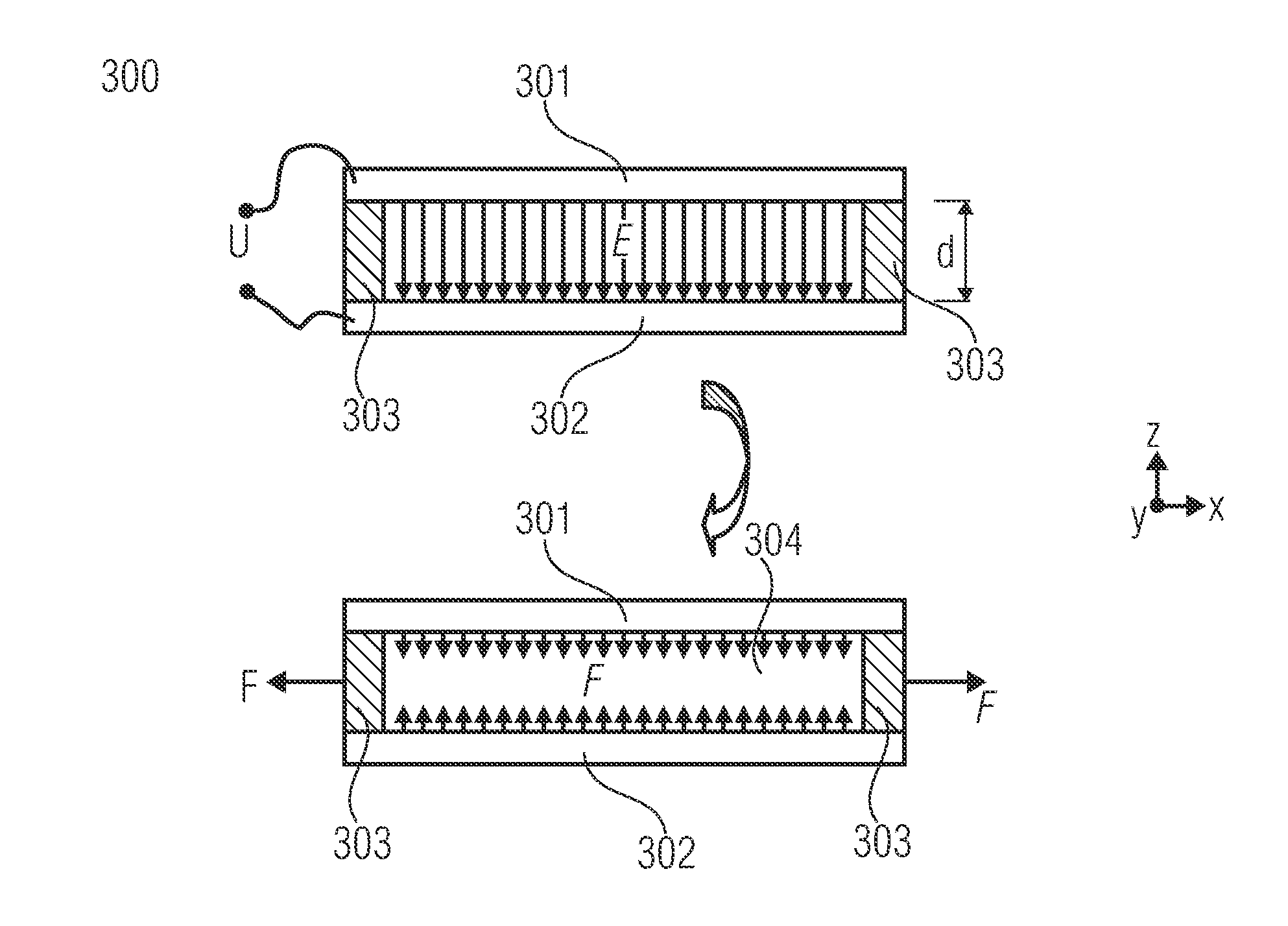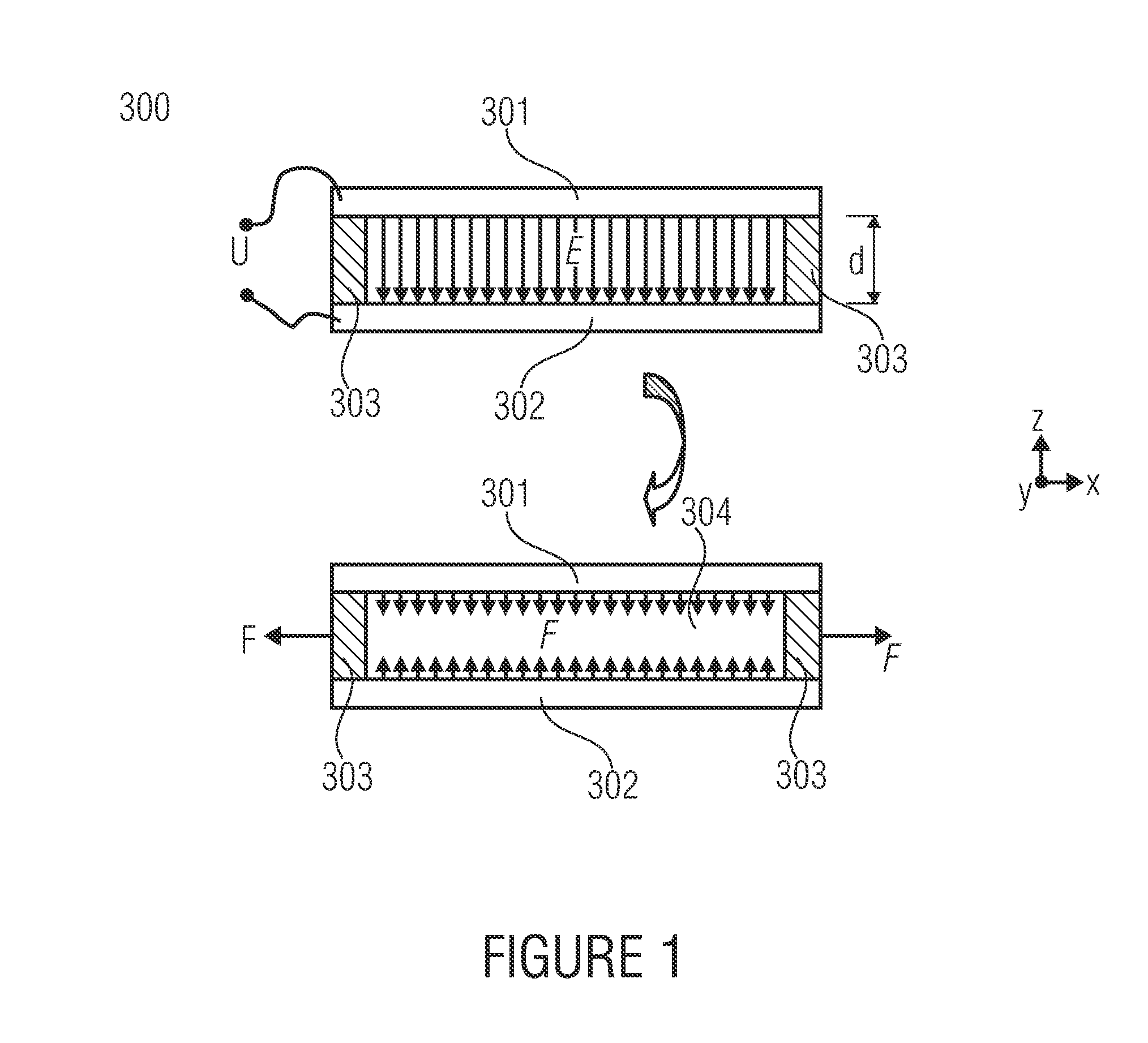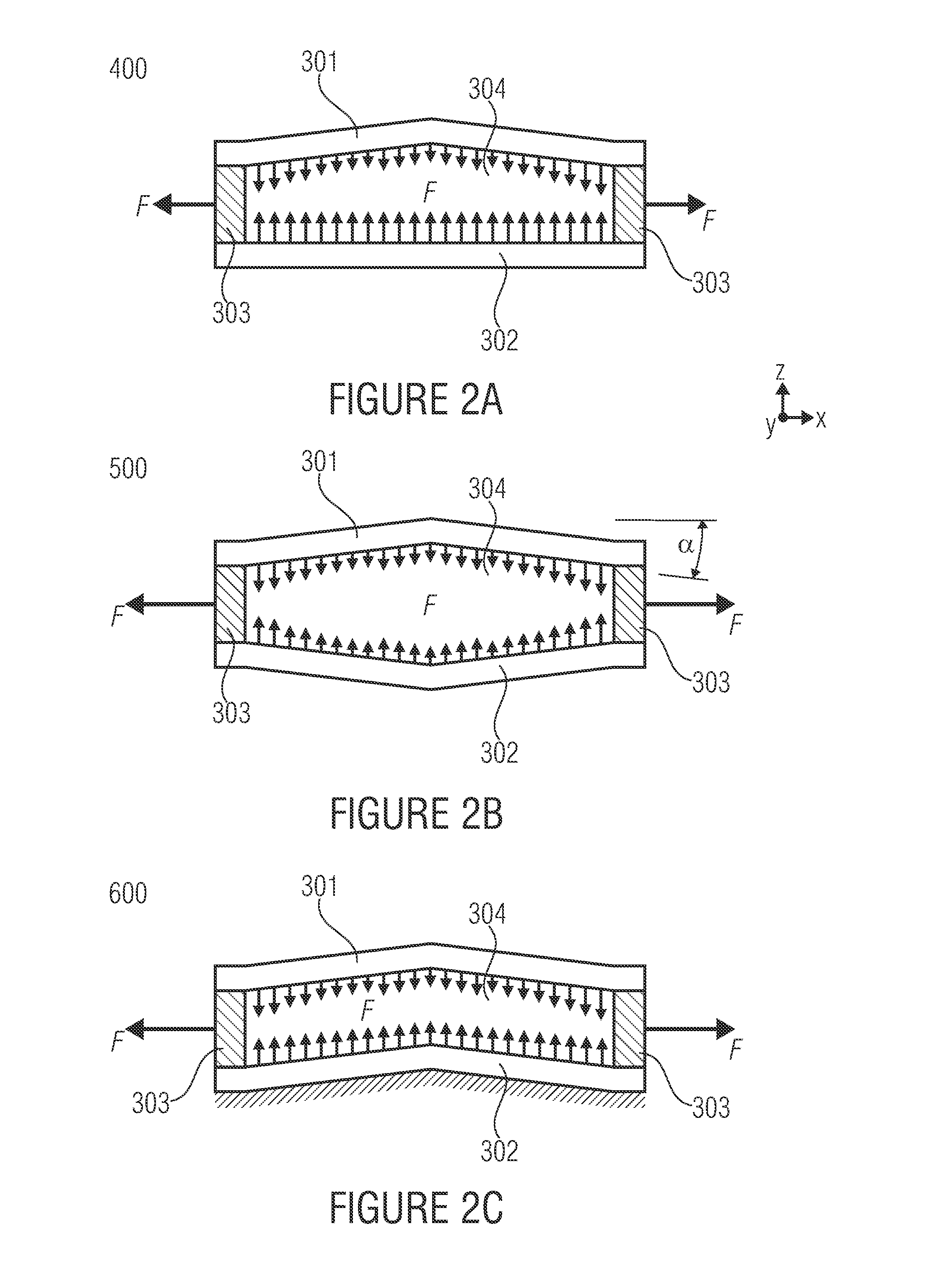Micromechanical device
a micromechanical and device technology, applied in the direction of electrostatic generator/motor, electrical apparatus, instruments, etc., can solve the problems of microstructure bending, significant increase of electric drive voltage, and high force effect of electrodes, and achieve the effect of effective drive mechanism and large deflection
- Summary
- Abstract
- Description
- Claims
- Application Information
AI Technical Summary
Benefits of technology
Problems solved by technology
Method used
Image
Examples
Embodiment Construction
[0096]Before embodiments of the present invention will be discussed in more detail below, at first, the basic principle or the basic effect underlying the subsequently described embodiments will be discussed or justified in more detail. At first, geometries for positive lateral contraction will be presented.
[0097]FIG. 1 shows the cross-section of a simple plate capacitor assembly 300. Here, electrodes 301 and 302 are arranged spaced apart from each other at a distance d using an electrically insulating material 303. The gap 304 between the electrodes can be filled with air, another gas or can be evacuated (vacuum) and has the permittivity ∈. If an electric voltage U is applied over the electrodes 301 and 302, an electrostatic field E will be formed. The electrostatic field exerts a vertical force Fz on both electrode areas.
[0098]If the electrodes 301 and 302 are effected in a very stiff manner (e.g. by materials having a high elasticity module or by a sufficient thickness), i.e. the...
PUM
 Login to View More
Login to View More Abstract
Description
Claims
Application Information
 Login to View More
Login to View More - R&D
- Intellectual Property
- Life Sciences
- Materials
- Tech Scout
- Unparalleled Data Quality
- Higher Quality Content
- 60% Fewer Hallucinations
Browse by: Latest US Patents, China's latest patents, Technical Efficacy Thesaurus, Application Domain, Technology Topic, Popular Technical Reports.
© 2025 PatSnap. All rights reserved.Legal|Privacy policy|Modern Slavery Act Transparency Statement|Sitemap|About US| Contact US: help@patsnap.com



